Blog • Published on:July 21, 2025 | Updated on:July 23, 2025 • 20 Min
Everything You Should Know Before Retiring in Malta
Imagine waking up to gentle waves kissing limestone shores, knowing you’ll see the sun on over 300 days this year, without ever needing to fumble for a new language.
Malta isn’t just another spot on the map; it’s a compact island nation where English is an official tongue, everyday life feels familiar, and the Mediterranean climate nudges you outdoors almost year-round.
More than 168,000 people living here aren’t Maltese by birth, over 29% of the total population, creating a lively, multicultural community that’s eager to welcome new retirees.
Ready to see why so many are choosing Malta as their forever home? Here’s a quick snapshot of what makes this island tick:
Benefits of Retiring in Malta
Mediterranean Lifestyle and Climate
- Sunny days: Malta averages over 300 days of sunshine each year, making early-morning seaside walks or afternoon terrace coffees almost always on the cards.
- Mild winters, warm summers: Winter temperatures rarely dip below 12 °C, while summer highs hover around 28–34 °C, inviting you to keep your calendar full of outdoor plans.
- Outdoor living: From hidden coves and coastal hiking trails to open-air markets and alfresco dining spots, the weather nudges you outside, blending relaxation with easy access to fresh produce.
English-Speaking Environment
- No language barriers: English is a full official language alongside Maltese; most government services, healthcare consultations, and legal processes are conducted in English.
- Everyday convenience: You won’t need to juggle phrases or struggle with translations, menus, road signs, and local news outlets are routinely available in English.
- Learning curve optional: While learning Maltese can unlock deeper connections, you can get by (and feel at home) from day one without extra language classes.
High-Quality Healthcare System
- Top 20 ranking: Malta’s healthcare is ranked highly, reflecting quality treatment and patient satisfaction.
- Public and private options: A universal public system is complemented by private clinics and specialists, giving you the flexibility to choose the level of care and service you prefer.
- Cost-effective care: For residents, public services come at a modest co-payment, and private insurance premiums remain competitive with other EU countries.
Strategic Location in Europe
- Central Mediterranean hub: Situated just 93 km south of Sicily and about 300 km north of Libya, Malta sits at an ideal midpoint between Europe and North Africa.
- Easy travel network: Regular flights and ferries link Malta to major European cities, Rome, London, and Barcelona are just a few hours away, so weekend getaways feel spontaneous.
- Cultural crossroads: Centuries of varied rule (Phoenicians, Romans, Knights of St John, British) have shaped a layered heritage; you can explore prehistoric temples, Baroque palaces, and WWII sites all in one weekend.
Malta Residency by Investment: What Retirees Should Know
If you’re looking for a long-term, permanent solution and don’t want to renew permits every few years, the Malta Permanent Residency Programme (MPRP) might be the better fit. Unlike the Retirement Programme, it’s open to a wider audience, including retirees, and is based on a real estate + government contribution model.
There are two main routes: buying or renting property.
Investment Requirements at a Glance
- Property Purchase: Must be held for at least 5 years (you can sell after that).
- Lease Contracts: Also require a 5-year minimum commitment, renewed annually.
- The €2,000 donation goes to a registered Maltese NGO—animal welfare, cultural heritage, or other local causes.
All applicants must also:
- Have €500,000 in total assets, of which at least €150,000 must be liquid (e.g. cash, investments).
- Hold valid health insurance covering Malta and the EU.
- Maintain a clean criminal background and pass a due diligence check.
You can’t apply on your own, applications must be submitted through a licensed agent registered with the Residency Malta Agency.
Cost of Living in Malta for Retirees
Living in Malta as a retiree offers a comfortable Mediterranean lifestyle without the extreme price tags of some Western European countries. But how much do you really need? Here's what it looks like on the ground today.
For a closer look at day-to-day expenses, pros and cons, and what life actually costs on the ground, read our blog on living in Malta.
Housing & Real Estate
Your biggest monthly expense will likely be housing. If you're planning to rent in popular coastal areas like Sliema or St. Julian’s, a well-kept, modern one- or two-bedroom apartment typically runs between €1,200 to €1,800 per month.
These areas are more built-up, with plenty of cafés, shops, and a strong expat presence.
In contrast, Valletta, with its historic charm and smaller flats, sits slightly lower, around €1,000 to €1,500/month.
If you're drawn to quieter, more budget-friendly spots like Gozo or South Malta, rent drops to around €700 to €1,200, and buying property is also significantly cheaper.
If you’re applying under the MPRP:
- Property purchase must be at least
- Renting instead? You’ll need to rent a property for a minimum €14,000 a year
Groceries & Dining
Malta’s local produce is affordable and fresh, which helps keep weekly grocery costs manageable.
- Expect to spend around €50 to €70 per week if you mostly cook at home.
- Basic staples:
- Milk: ~€1.05/L
- Bread: ~€1.40
- Eggs: ~€2.60/dozen
- Local cheese, fresh veggies, and olive oil are widely available and well-priced.
Dining out is reasonable if you avoid tourist traps.
- A casual lunch or light dinner: €12–€20
- Two-course dinner for two at a decent restaurant: €30–€50
Healthcare Costs
Malta has both public and private healthcare, but as a retiree on a visa, you’ll need private health insurance to apply and maintain your status.
- Annual premiums: €1,000–€1,500, depending on your age and coverage.
- Private GP visit: €15–€25
- Private specialist consultation: €50–€90
Healthcare quality is solid, and many retirees find Malta’s system efficient and easy to access.
Transportation
You don’t need a car to get around, especially if you’re in a central area.
- Weekly Tallinja Card (unlimited bus pass): €25
- One-off 2-hour ticket: €2 (€2.50 in summer)
- Fuel (if you drive): around €1.34 per liter
- Basic car insurance: €300–€500/year
Taxi apps like Bolt or eCabs are cheaper than traditional taxis and widely used.
Utilities & Internet
Utilities are moderate by EU standards but can spike in summer (A/C) or winter (space heaters). For a modest apartment:
- Electricity and water: €70 to €120/month
- Add €30–€50/month for high seasonal use
- Internet (standard speed): €30–€40/month
Best Places to Retire in Malta
Malta may be small, but each part of the island has a distinct rhythm. Whether you're drawn to waterfront cafés, historic limestone alleys, or the quiet of countryside living, there's a spot that matches your pace.
Sliema
If convenience, sea views, and a strong expat presence top your list, Sliema is where you’ll feel most at home.
This coastal town is packed with restaurants, cafés, and easy access to shopping and healthcare. It's walkable, well-connected by public transport, and ideal if you enjoy staying active.
- English is spoken everywhere
- Close to major hospitals and clinics
- Promenade perfect for daily walks
- Downsides: Higher rents, more traffic, especially in summer
St. Julian’s
Just around the bay from Sliema, St. Julian’s has a livelier energy. Think modern apartments, luxury developments, and an upscale food scene.
It’s not as quiet, but if you're looking for a social lifestyle with a touch of sophistication, this could be your match.
- More nightlife and dining options
- Premium properties with sea views
- Close to casinos, yacht marinas, and private clinics
- Ideal for retirees who like having visitors or hosting family
Valletta
Malta’s tiny capital is rich in Baroque architecture, museums, and cultural events. It’s perfect if you want charm, walkability, and don't mind navigating a few hilly streets.
- Lots of character and UNESCO heritage sites
- Weekly concerts, galleries, and festivals
- Many restored townhouses and boutique flats
- Small-town vibe with city perks
Valletta is a pedestrian’s dream but can be less accessible for those with mobility concerns due to stairs and cobblestones.
Gozo
If you’re after peace and space, Gozo is Malta’s quieter, greener sister island. With fewer crowds, more traditional homes, and a strong sense of community, it’s a favorite for retirees seeking a slower pace.
- Lower cost of living
- Unspoiled countryside and quieter beaches
- Smaller towns with local charm
- Ideal if you’re okay with fewer big-city conveniences
Ferries connect Gozo to the main island, and a fast ferry now links to Valletta directly, great for trips back and forth when needed.
Healthcare System for Retirees in Malta
Malta's healthcare system is one of the strongest reasons retirees feel confident about relocating here. It’s well-organized, accessible, and known for short wait times and high professional standards.
Public Healthcare Access
Malta operates a public healthcare system that’s free at the point of use for Maltese citizens and EU residents. However, if you're retiring from a non-EU country (like the UK post-Brexit, US, Canada, etc.), you won’t automatically qualify for the public system, which is why private health insurance is mandatory for all residency applicants.
Still, once you’re a resident, you can access some subsidized services (like medications) depending on your visa type, age, and specific agreements between Malta and your home country.
- Public hospitals are modern and well-equipped
- Mater Dei Hospital in Msida is the island’s main facility
- Emergency care is available to all, regardless of residency
Private Healthcare Options
Most expats and retirees use Malta’s private healthcare network, which is fast, affordable, and largely English-speaking.
- Appointments are easy to book, often within days
- Clinics and specialists are located in Sliema, St. Julian’s, and Valletta
- Services include GP care, diagnostics, dentistry, and elective procedures
- Popular providers: Saint James Hospital Group, DaVinci Hospital, LifeScan
Costs are reasonable:
- GP consultation: €15–€25
- Specialist visit: €50–€90
- Routine blood work: €30–€50
- MRI: €200–€350
Health Insurance Requirements
Whether you're applying under the MRP or MPRP, comprehensive health insurance is required, you’ll need to show proof during the visa process.
The policy must:
- Be valid across the EU
- Cover inpatient and outpatient care, including hospital stays
- Include emergency services and ideally pre-existing conditions (some insurers require a waiting period for those)
Average annual premium:
- €1,000 to €1,500 for retirees aged 60–75
- Premiums rise with age and coverage, but remain below many Western countries
Tip: Some local providers offer expat-focused plans with English-speaking support.
Medical Facilities & Pharmacies
Malta’s pharmacies are well-stocked, and pharmacists often act as the first point of care for minor issues.
No prescription is needed for many over-the-counter medications. Pharmacists can also refer you to doctors if needed, and most speak fluent English.
- Pharmacies are open daily; extended hours in tourist areas
- Repeat prescriptions are easy to manage
- Long-term medication costs are moderate, especially for generics
Tax Benefits for Retirees in Malta
Malta’s appeal isn’t just sunshine and sea, it’s also a country where managing your tax obligations in retirement can be relatively straightforward, especially if you qualify for one of its dedicated residency programmes.
Here's how taxes work for retirees, depending on how you choose to settle.
Flat 15% Rate Under the Retirement Programme (MRP)
If you retire in Malta under the Malta Retirement Programme (MRP), you’ll be taxed at a flat 15% rate on any foreign pension income you bring into the country.
This rate only applies to remitted income, meaning money you actually transfer into Malta from abroad.
You’re required to pay a minimum annual tax of €7,500, plus €500 for each dependent. Even if your actual tax under the 15% rule is lower, the minimum still applies.
This structure gives retirees a certain level of flexibility, you can manage how much income you bring into Malta, and that controls what gets taxed. Income that stays abroad, and isn’t transferred to a Maltese account, isn’t taxed locally.
But if you plan to rely fully on your pension in Malta (as most do), you’ll likely remit most or all of it anyway.
In addition:
- The 15% flat rate also applies to foreign investment income or capital gains, if received in Malta
- You cannot declare Malta as your tax domicile under this programme (you’re considered a tax resident but not domiciled)
You must file an annual tax return, and while the process is fairly simple, most retirees choose to work with a local tax advisor to ensure everything is declared correctly.
Double Taxation Agreements (DTAs)
Malta has signed tax treaties with over 80 countries, including:
- The UK
- United States
- Canada
- Australia
- EU nations
- UAE and several Middle Eastern countries
These Double Taxation Agreements (DTAs) prevent you from being taxed on the same pension income twice. Depending on your treaty, your pension may be taxable only in your home country, only in Malta, or taxed in both with credits applied.
How this affects you depends on the source of your pension:
- Government pensions (e.g. US Social Security, UK State Pension) are often taxed in your home country only
- Private or occupational pensions are typically taxed in Malta under the 15% flat rate if you’re on the MRP
- Lump sum pension withdrawals or annuity payments may have specific rules—get advice before transferring large amounts
No treaty? You may face dual taxation, though relief may be available depending on your home country’s tax code.
Property-Related Taxes
If you plan to buy a home in Malta, here’s what to expect:
- No annual property tax – Malta doesn’t charge a recurring municipal tax just for owning a property
- Stamp duty – A one-time payment of 5% of the purchase price is due when you buy
- Property transfer tax – If you sell the property within five years of buying, you’ll reduce the final withholding tax of 8% to 5% on the selling price
- Sell after 5 years, this may drop to 2%, provided the property was your sole ordinary residence
How Taxes Compare
If you’re used to higher income taxes in your home country, the 15% flat rate can offer real savings, especially for those drawing larger pensions or living off investment income.
However, Malta isn’t a tax haven. The system is well-regulated, and transparency is high. What you gain is clarity and predictability.
Whether you choose the Retirement Programme or the Residency-by-Investment route (which does not come with special tax rates), it’s best to get personalized advice once your income sources and residency status are clear.
Legal Requirements and Documentation
Whether you’re applying for the Malta Retirement Programme (MRP) or the Permanent Residency Programme (MPRP), there’s a structured legal process to follow. It's not overwhelming, but attention to detail matters. Here's what you need to know.
Residency Permit Process
You can’t apply on your own. Malta requires all applications to be submitted through an Authorised Registered Mandatory (ARM), a licensed local agent who handles the paperwork and communicates with authorities on your behalf.
The process looks like this:
- Pre-check: Your agent reviews your documents and confirms your eligibility.
- Application submission: The full file is submitted to the relevant government agency (Inland Revenue for MRP, Residency Malta Agency for MPRP).
- Administrative fee:
- €2,500 (MRP)
- €30,000 or €60,000 (MPRP depending on whether you buy or rent)
- Letter of Intent: If accepted, you’ll receive conditional approval.
- Final steps: After purchasing or leasing property, buying insurance, and meeting any other outstanding conditions, you'll receive your residency card.
Processing time typically takes:
- 3–4 months for MRP
- 4–6 months for MPRP
Once approved, your residency card allows you to live in Malta year-round, travel across Schengen countries (90 days out of 180), and renew according to your programme's terms.
Property Purchase Requirements
If you're buying property under either residency route, here’s what’s required:
- Minimum property value:
- €275,000 (Malta mainland) or €220,000 (Gozo/South) under MRP
- €375,000 (Malta)
- The property must be your primary residence in Malta
- Under MPRP, the home must be held for at least 5 years
- Stamp duty (5%) is payable on purchase; buyers usually also cover legal and notary fees
If renting:
- MRP minimum: €9,600/year (Malta) or €8,750/year (Gozo/South)
- MPRP minimum: €14,000/year (Malta)
- Lease must be valid and registered, typically for a minimum of 12 months, or 5 years for MPRP
Bank Account Setup
You’ll need to open a Maltese bank account to:
- Receive your pension or transfer funds for the purpose of residency
- Show “remittance” of income into Malta for MRP tax eligibility
- Pay property costs, insurance, and ongoing living expenses
Opening an account usually requires:
- Passport and residency card (or proof of application)
- Proof of address (lease or property deed)
- Source of funds (pension letter, annuity statement, or savings)
- A bank reference from your home country
Major banks include Bank of Valletta, HSBC Malta, APS Bank, and BNF Bank. The process is straightforward but can take a few weeks.
Insurance Requirements
Private health insurance is mandatory for both MRP and MPRP applicants. The policy must:
- Cover you and any dependents
- Be valid in Malta and throughout the EU
- Include both inpatient and outpatient services, plus emergency coverage
- Have no large exclusions for chronic illness or age limits (check this carefully)
You’ll need to show your policy certificate and proof of payment as part of your residency application.
Living in Malta as a Retiree
Once the paperwork is done and your residency is secured, life in Malta becomes all about routine, rhythm, and enjoyment.
The country is small but rich in personality, and retirees often find it easy to integrate into local life without giving up familiarity.
Social Life & Activities
Malta has a large, visible expat community, especially in areas like Sliema, St. Julian’s, Valletta, and Gozo. That makes it easy to meet people through casual encounters, local Facebook groups, or community clubs.
- Weekly expat meetups, book clubs, walking groups, and yoga classes are easy to find.
- English is widely spoken, so there’s no real language barrier when making friends or joining local activities.
- If you're more into culture than cocktails, you’ll find plenty of exhibitions, music events, and history-focused tours happening year-round.
Locals tend to be welcoming but reserved at first. A few Maltese phrases (even just “bonġu” for hello) go a long way.
Transportation Options
You don’t need a car to live well in Malta, but it can help if you’re in a quieter area like Gozo or the south.
- Public buses cover nearly all towns and cities. The Tallinja Card gives residents unlimited use for €25/month.
- Ferries connect Valletta to Sliema and the Three Cities, cheap, scenic, and fast.
- Ride-hailing apps like Bolt and eCabs are widely used and often cheaper than taxis.
- Driving? Roads are left-hand (British-style), and parking in urban zones can be tight, so weigh the pros and cons.
Safety & Security
Malta consistently ranks as one of the safest countries in Europe. Violent crime is extremely rare, and street-level crime (like pickpocketing) is mostly limited to crowded tourist spots in summer.
- It’s common to see people walking alone late at night
- Police are approachable and responsive
- Emergency services use the EU-wide number 112
That said, always secure your home and don’t leave valuables in unlocked vehicles, basic common sense applies anywhere.
Cultural Integration
Culturally, Malta is a blend of Southern European and British influences, with its own unique history layered on top. You'll see red phone booths, Catholic shrines, and Arabic-sounding town names all on the same street.
Here’s what helps integration:
- Understanding that island life moves at a slower pace, appointments may run late, and some things aren’t as efficient as you’re used to
- Respecting local customs, especially around religion and family traditions
- Shopping at village markets or attending village festas (feast days) is an easy way to mix in and get to know your neighborhood
You won’t need to speak Maltese, but a curious and respectful attitude goes a long way.
Practical Steps to Retire in Malta
Planning a move is one thing, executing it without stress is another. Here’s how to approach your retirement relocation to Malta, step by step.
This section assumes you’ve already picked your preferred residency route (MRP or MPRP) and are ready to make the move happen.
Planning Timeline
Most retirees start planning at least 6 to 12 months in advance. Why? Because paperwork, property searches, and financial prep all take time, especially when you're coordinating across borders.
Here’s a rough guide:
6–12 months before the move
- Research visa requirements and choose your route (Retirement vs Investment)
- Speak to a licensed agent in Malta to confirm eligibility
- Get pre-approval from your home country to transfer pension or funds abroad
- Start looking at neighborhoods and housing options
- Begin collecting legal and financial documents (ID, bank reference, pension proof, etc.)
3–6 months out
- Finalize your residency application and submit it through your agent
- Open a Maltese bank account
- Shortlist rental properties or start the process of buying (if required by your visa)
- Get quotes and choose a private health insurance provider
- Sort out tax planning in your home country (especially if remitting pension)
1–2 months out
- Confirm your Malta address and insurance coverage
- Arrange your travel and temporary accommodation, if needed
- If bringing pets, begin their documentation and vaccinations
- Notify your pension provider of your new banking and address details
- Begin packing essentials for 3–6 months of living (you can ship the rest later)
Finding Accommodation
Your visa route determines what kind of property you need. For MPRP, the property must meet specific thresholds, and you’ll need a lease agreement or title deed before final approval.
For MRP, you can sign a shorter lease initially, but it still needs to meet the minimum rent levels.
Tips for finding housing:
- Use trusted local agencies (your registered agent can recommend options)
- Prioritize areas near hospitals, shops, and public transport
- Check lease conditions carefully, many require 12 months upfront
- Consider starting with a furnished rental before buying anything long-term
Healthcare Registration
Even though you're using private insurance, you’ll still want to:
- Register with a local GP or family clinic once you're settled
- Save emergency numbers and clinic locations near your new home
- Learn where the nearest hospital or walk-in clinic is (especially in Gozo or quieter areas)
- Understand how to refill prescriptions locally and transfer medical records if needed
If your country has a reciprocal healthcare agreement with Malta (some EU countries do), ask your agent whether any public benefits might apply to you after arrival.
Banking Setup
Once you’re a resident or in the process of applying, you’ll need to open a local bank account. This is essential not just for paying bills or shopping locally, but also for meeting residency conditions like remitting your pension into Malta.
What you’ll need:
- Valid passport
- Proof of Malta address (rental contract or deed)
- A bank reference or recent statements from your home country
- Proof of income (pension letters or annuity contracts)
- Some banks may also ask for a tax identification number (TIN) from your home country
Most retirees go with Bank of Valletta, APS, HSBC Malta, or BNF. You can usually open your account within a week, but some banks take longer depending on document checks.
FAQs on Retiring in Malta
1. Can I live in Malta year-round as a retiree?
Yes, both the Malta Retirement Programme (MRP) and Malta Permanent Residency Programme (MPRP) allow you to live in Malta full-time. Under the MRP, you're required to spend at least 90 days per year in Malta, averaged over five years.
The MPRP offers permanent residency, so you can stay as long as you like, provided you meet the property and financial conditions.
2. Will my foreign pension be taxed in Malta?
Yes, but only the portion you remit (transfer) into Malta. Under the MRP, foreign pension income remitted is taxed at a flat 15%, with a minimum tax payment of €7,500 per year. If you're under the MPRP, you're taxed under Malta's standard tax rules, which vary depending on your income.
3. Can I access Malta’s public healthcare system?
Not automatically. As a third-country retiree, you're expected to have private health insurance that covers you in Malta and the EU. Public healthcare is generally reserved for Maltese and EU citizens, although some bilateral agreements exist (check with your home country).
4. Do I need to learn Maltese to live in Malta?
No. English is one of Malta’s two official languages, and it's widely spoken in every aspect of life, government services, healthcare, banking, and social situations. You’ll get by just fine without learning Maltese, although locals appreciate the effort if you try a phrase or two.
5. Can I work or start a business as a retiree?
Generally, no. Under the MRP and MPRP, you’re not allowed to work in Malta, that includes salaried jobs and freelance services.
However, you can own shares in a business, receive dividends, or sit on a board (non-executive role only). The goal is passive income, not active employment.
References
Maltese Government Social Security Directorate. (2024). Additional Cost of Living Benefit 2025 overview. Government of Malta. https://www.socialsecurity.gov.mt/en/information-and-applications-for-benefits-and-services/grants-bonuses-and-schemes/additional-cost-of-living-benefit-2025
World Health Organization. (2024). Malta: Health system summary, 2024. WHO Regional Office for Europe. https://iris.who.int/handle/10665/381444
European Commission, Eurostat. (2025, January 21). Key figures on European transport – 2024 edition (Statistical publication KS‑01‑24‑021). https://ec.europa.eu/eurostat/documents/15216629/20875401/KS-01-24-021-EN-N.pdf
World Bank. (2024). Malta economic indicators: GDP per capita, life expectancy, unemployment [Data profile]. World Bank Data. https://data.worldbank.org/country/malta
European Observatory on Health Systems and Policies; World Health Organization. (2024). Malta: Country health profile 2023. https://eurohealthobservatory.who.int/publications/m/malta-country-health-profile-2023
Written By

Andrew Wilder
Andrew Wilder is a multifaceted author on Business Migration programs all over the globe. Over the past 10 years, he has written extensively to help investors diversify their portfolios and gain citizenship or residency through innovative real estate and business investment opportunities.
Related Articles



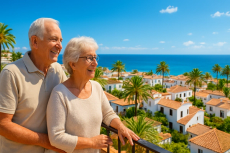

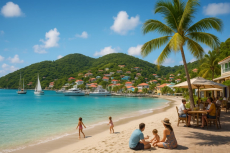


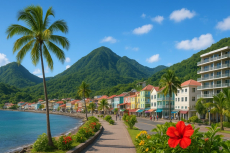
Recently Published
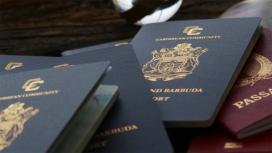
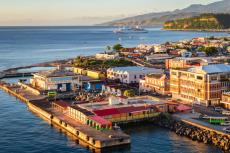
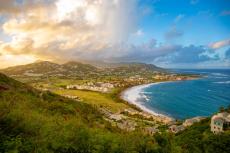

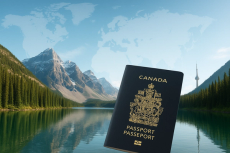
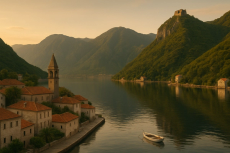
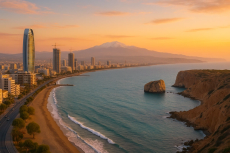

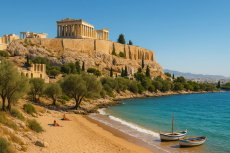
Book a free consultation


